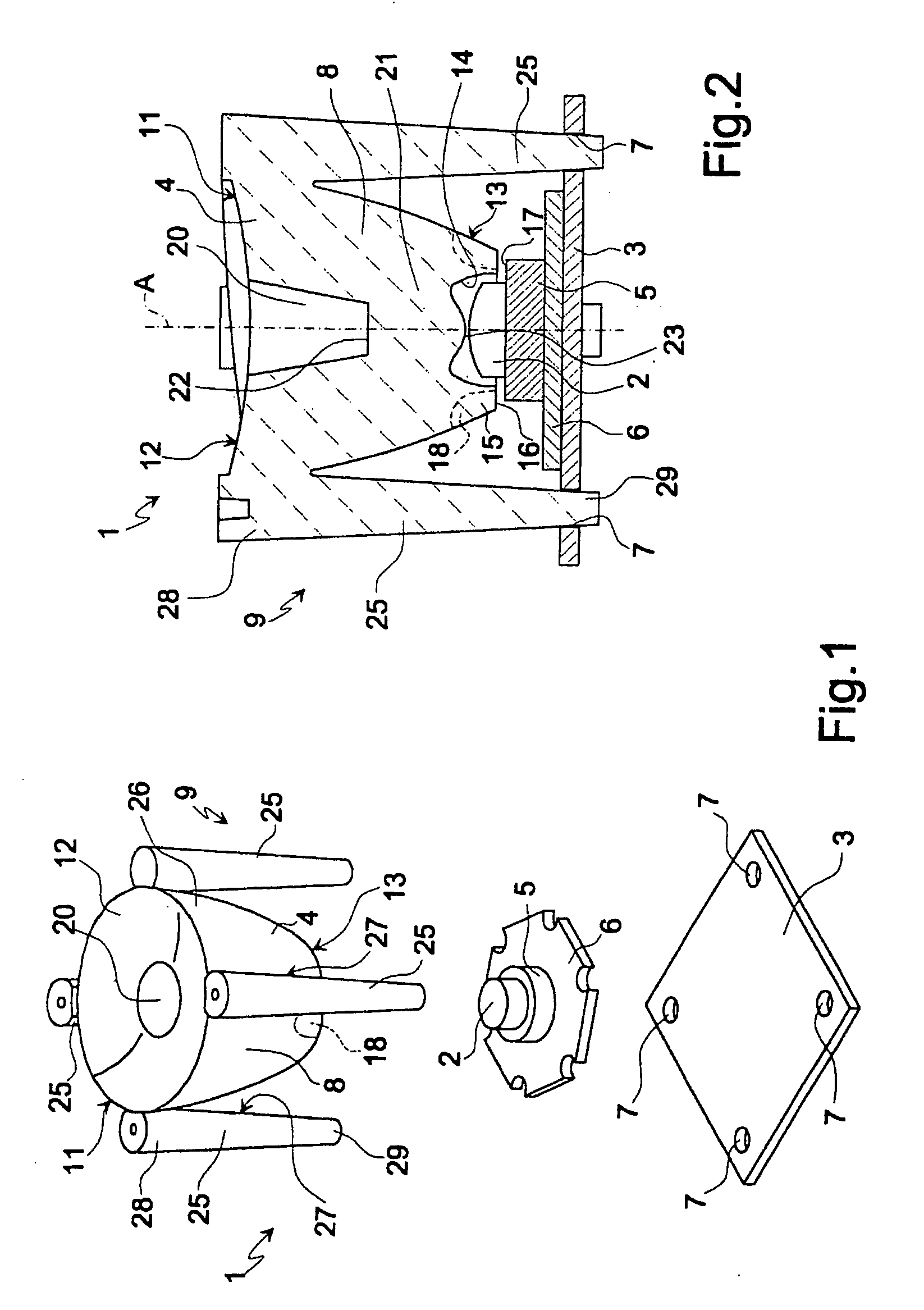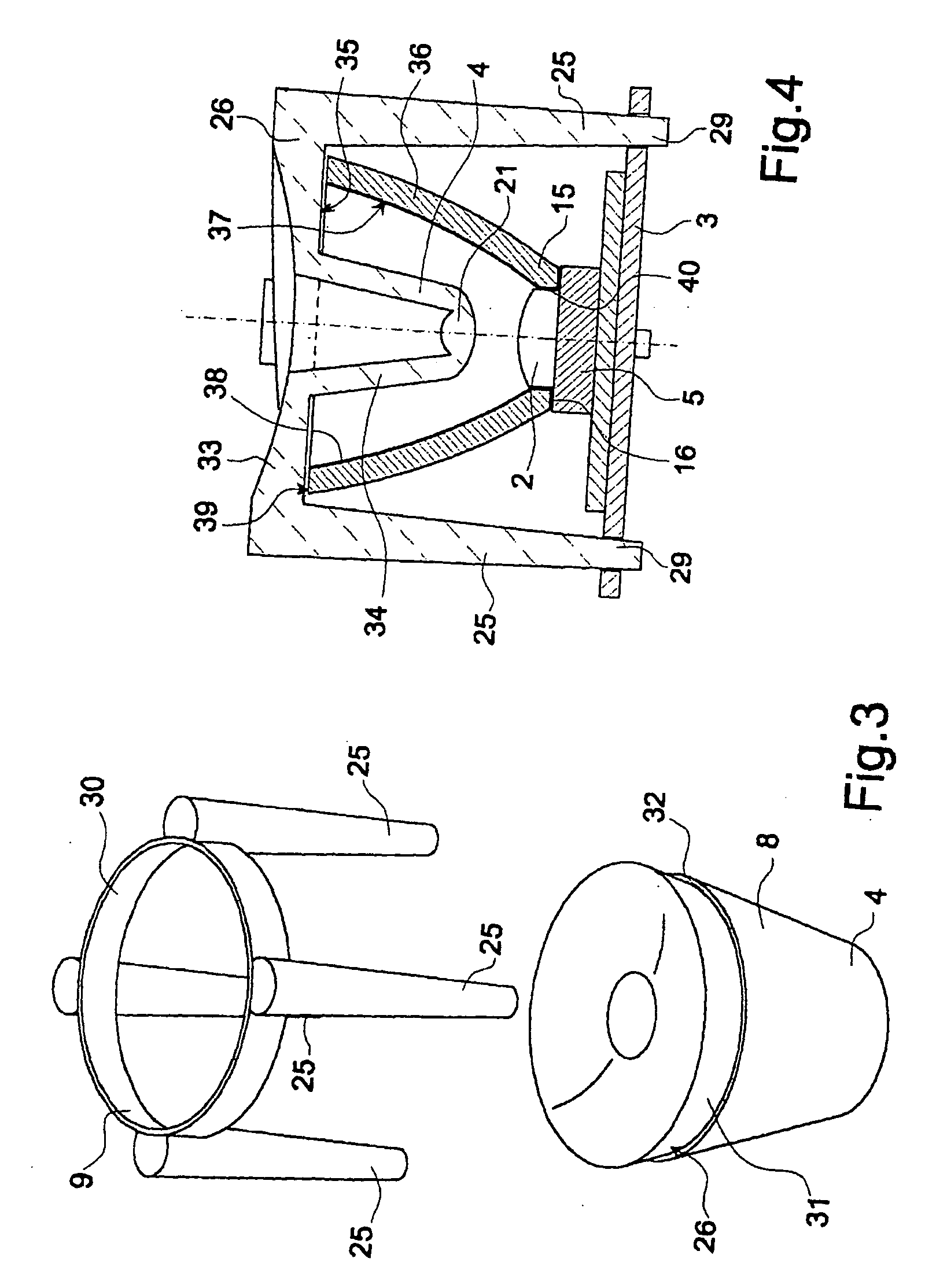High-heat-dissipation lighting module
a lighting module and high heat dissipation technology, applied in lighting and heating equipment, semiconductor devices for light sources, instruments, etc., can solve the problems of effectively cooling leds, difficult production, and further compounding of the problem of difficult to produce, and achieve the effect of high heat dissipation capacity, cheap and easy production
- Summary
- Abstract
- Description
- Claims
- Application Information
AI Technical Summary
Benefits of technology
Problems solved by technology
Method used
Image
Examples
Embodiment Construction
[0016] Number 1 in FIGS. 1 and 2 indicates a lighting module comprising a solid-state light source 2, in particular a LED, a supporting plate 3, and a lens 4.
[0017] LED 2 is supported on a known mount 5 (shown only schematically) comprising an optional known dissipating plate 6. For the sake of simplicity, known contacts and connections for connecting LED 2 electrically to an external network are not shown. Mount 5 (or dissipating plate 6, if any) is fixed to plate 3 by known heat-conducting adhesive.
[0018] Plate 3 is a substantially flat heat-dissipating plate of any shape made, for example, of metal material, and has four seats 7 defined by respective circular-section through holes.
[0019] Lens 4 is a total-internal-reflection lens, and comprises a substantially cup-shaped optical body 8 made of transparent plastic material (e.g. polycarbonate PC or polymethyl methacrylate PMMA); and a supporting structure 9 by which lens 4 is supported by and projects from plate 3.
[0020] In th...
PUM
 Login to View More
Login to View More Abstract
Description
Claims
Application Information
 Login to View More
Login to View More - R&D
- Intellectual Property
- Life Sciences
- Materials
- Tech Scout
- Unparalleled Data Quality
- Higher Quality Content
- 60% Fewer Hallucinations
Browse by: Latest US Patents, China's latest patents, Technical Efficacy Thesaurus, Application Domain, Technology Topic, Popular Technical Reports.
© 2025 PatSnap. All rights reserved.Legal|Privacy policy|Modern Slavery Act Transparency Statement|Sitemap|About US| Contact US: help@patsnap.com



